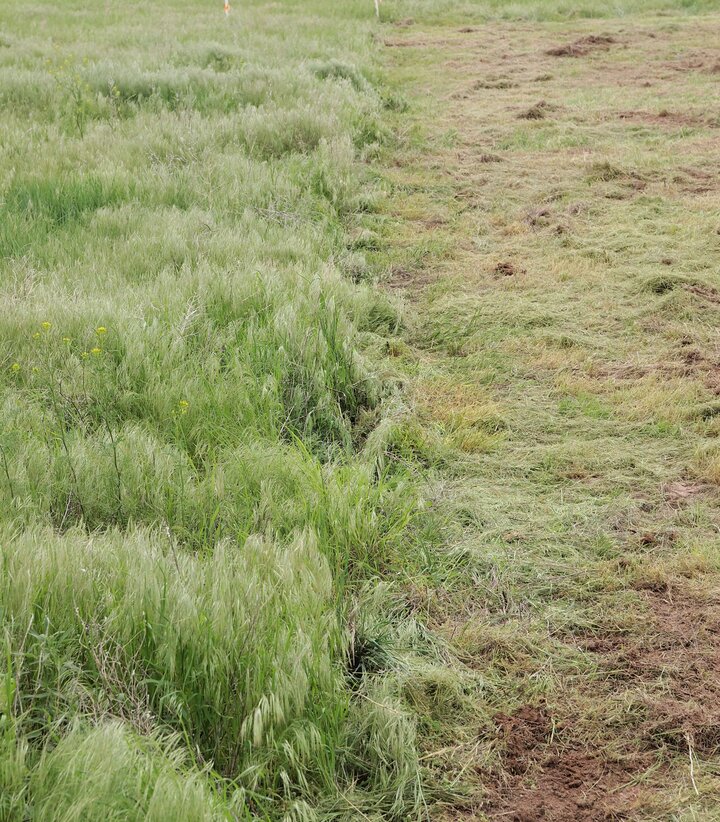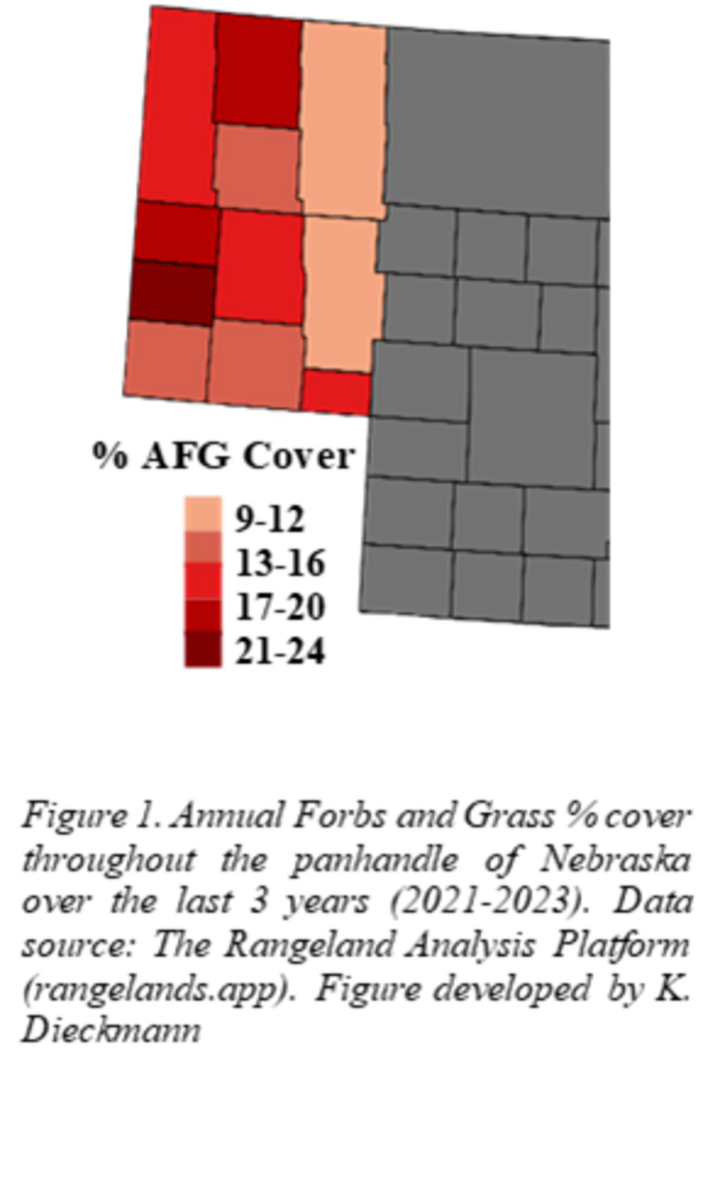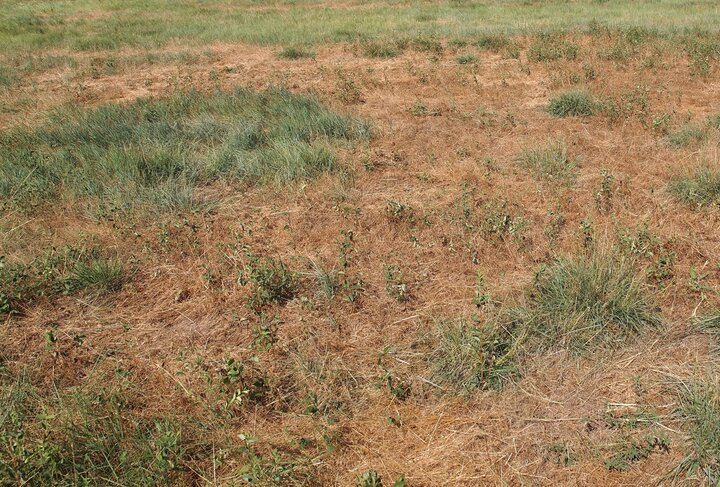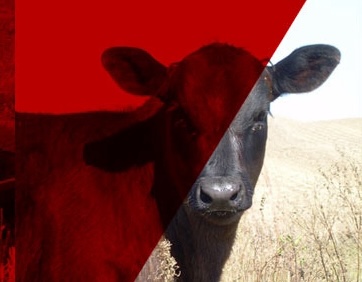
Nebraska’s grasslands cover approximately 50% of the state’s land area. Grasslands are vital as a livestock forage base but also provide numerous other ecosystem services like wildlife habitat, water infiltration, and carbon cycling. Nebraska’s grasslands have multiple challenges including woody plant encroachment, cropland conversion, and the invasion of annual invasive grasses (primarily cheatgrass, Bromus tectorum) in the western part of the state.
Cheatgrass is an invasive winter annual grass that typically germinates in the fall when adequate precipitation is present. However, cheatgrass is highly flexible in its germination date and can also germinate early in the spring, even with minimal precipitation. As a result of early germination and prolific seed production, cheatgrass is highly competitive and often out-competes native vegetation for limited resources. Cheatgrass presence on rangelands is most prevalent in the Panhandle with Banner, Scotts Bluff, and Dawes counties having the highest percent cover of annual forbs and grasses (See Fig. 1)

Cheatgrass invasion into grazing lands is challenging because of the short growth window of cheatgrass. Early in the growing season, cheatgrass nutritive value often exceeds native perennial grass species, and cattle will graze and consume cheatgrass along with other cool-season native species growing at that time. However, later in the growing season, after cheatgrass has set seed, cattle will avoid consuming cheatgrass. Recent research in the Panhandle has shown that areas where cheatgrass was removed with herbicide had crude protein levels 21 to 62% higher than untreated areas in mid-July, highlighting the negative influence of cheatgrass on cattle forage nutritive value in the mid-summer.
Herbicide options for rangelands include application of imapzipic (tradename: Plateau), indaziflam (tradename: Rejuvra), or a combination of both herbicides. The combination of both herbicides has generally provided better control over longer time periods than herbicides applied alone. For example, an analysis of 5 locations in the Nebraska Panhandle where a combination of Rejuvra (5 oz) and Plateau (4 oz) were applied to rangelands in the fall of 2022 showed greater than 98% control of cheatgrass three years after the herbicides were applied. In this study, native perennial grass biomass averaged 2 to 3 times greater in areas where cheatgrass had been removed compared to annual grass invaded sites.
If you are considering using herbicide to manage annual invasive grasses, there are a number of things to consider. First, determining the location of the treatment that will lead to the most opportunities for native perennial grasses to succeed. This includes actively monitoring pastures and selecting those that have a strong (several plants per square meter) presence of perennial grasses and forbs. Second, herbicide is typically applied in the fall and because germination of cheatgrass may have already occurred depending on the amount of precipitation, the combination of Rejuvra and Plateau is recommended to provide better cheatgrass control. Lastly, developing a grazing plan following herbicide will provide better opportunities for success. Adaptively managing grazing following herbicide application on rangelands by setting appropriate stocking rates and allowing growing season recovery based on variable growing season precipitation can be used to enhance rangeland opportunity to build resistance to re-invasion.
Article by Mitch Stephenson, Karley Dieckmann, and Aaron Berger, Nebraska Extension.

